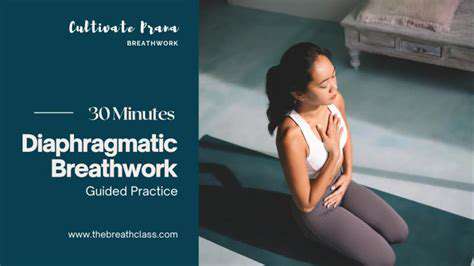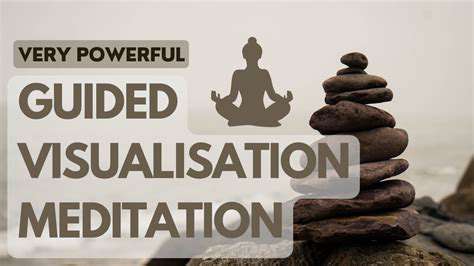Effective Muscle Relaxation Techniques for Anxiety Relief
Understanding the Technique
Progressive Muscle Relaxation (PMR) is a technique that helps reduce muscle tension and promote relaxation by systematically tensing and releasing different muscle groups in the body. This process allows you to become more aware of the physical sensations associated with tension and relaxation, which can then be used to manage stress and anxiety in daily life. It's a valuable tool for anyone seeking to improve their overall well-being and manage physical discomfort. The core principle is to consciously differentiate between the feeling of tension and the feeling of relaxation, thus creating a heightened awareness of the body's response to stress.
By focusing on the physical sensations of tension and release, PMR helps to quiet the mind and promote a state of calm. This technique is often used in conjunction with other stress-management strategies, like deep breathing exercises, and can be adapted to suit individual needs and preferences. It's important to approach PMR with patience and consistency, as it takes time and practice to develop the skill of consciously inducing relaxation. The more you practice, the more effectively you can use PMR to manage stress and anxiety.
Applying PMR Effectively
To effectively utilize PMR, it's crucial to follow a structured approach. Begin by finding a comfortable position, either sitting or lying down, where you can relax without distractions. Focus on your breathing, taking slow, deep breaths to calm your nervous system. Start by tensing a specific muscle group, like your hands, holding the tension for a few seconds, and then releasing it, noticing the difference between the tense and relaxed state. Gradually progress through different muscle groups, from your hands to your arms, shoulders, face, chest, abdomen, and legs, ensuring you fully experience the sensations of tension and release in each muscle group. This systematic approach allows you to identify and address areas of tension in your body.
Throughout the process, pay close attention to the physical sensations in your body. Notice how your muscles feel when they are tense, and then how they feel when they are relaxed. This awareness is key to understanding your body's response to stress and developing a greater capacity for relaxation. Consistency is vital; regular practice of PMR can help you build resilience to stress and develop healthier coping mechanisms. Remember, PMR is a personalized practice; adjust the duration and intensity of the exercises to your comfort level and individual needs.
Diaphragmatic Breathing: Calming Your Nervous System

Diaphragmatic Breathing Techniques
Diaphragmatic breathing, often referred to as deep or abdominal breathing, is a powerful technique that involves engaging your diaphragm, the primary muscle of respiration, to facilitate a more efficient and controlled breathing pattern. This mindful approach to breathing is widely recognized for its ability to calm the nervous system and promote relaxation. Proper diaphragmatic breathing techniques can significantly reduce stress and anxiety, allowing you to manage emotions more effectively.
The key to diaphragmatic breathing lies in understanding its mechanics. When you breathe deeply, your diaphragm contracts and moves downwards, expanding your lungs and drawing air into your system. This process allows for a greater volume of air to be inhaled compared to shallow breathing, leading to a more complete oxygenation of the body.
Benefits of Practicing Diaphragmatic Breathing
The benefits of incorporating diaphragmatic breathing into your daily routine extend far beyond simply feeling calmer. It can positively influence various aspects of your physical and mental well-being. Regular practice can help reduce feelings of stress and anxiety, and promote a sense of overall well-being.
Improved sleep quality is another significant benefit. By slowing your heart rate and calming your mind, diaphragmatic breathing can create a more conducive environment for restful sleep. Consistent practice can lead to a more relaxed and rejuvenating sleep experience.
How to Practice Diaphragmatic Breathing
Learning diaphragmatic breathing is a straightforward process that can be easily incorporated into your daily routine. Find a comfortable seated or lying position. Place one hand on your chest and the other on your abdomen. Inhale slowly and deeply through your nose, focusing on feeling your belly rise as your diaphragm expands. Exhale slowly through your mouth, allowing your belly to fall as your diaphragm relaxes.
Repeat this process several times, focusing on the smooth and controlled nature of each breath. Practice regularly, even for just a few minutes daily, to experience the full benefits of this technique.
Variations of Diaphragmatic Breathing
While the fundamental principles of diaphragmatic breathing remain the same, there are various techniques and variations to personalize your practice. One variation involves incorporating visualization or mental imagery. Visualize a calming scene or a peaceful place as you breathe deeply. Another approach involves incorporating sensory awareness, focusing on the sensations of each breath as it enters and leaves your body.
Diaphragmatic Breathing and Stress Reduction
Diaphragmatic breathing offers a powerful tool to mitigate stress. By engaging your diaphragm and slowing your breath, you activate the parasympathetic nervous system, which counteracts the effects of stress hormones. This promotes relaxation and helps to calm the body's response to stressful situations. The technique is particularly effective in managing acute stress responses and long-term stress management.
Furthermore, regular practice of diaphragmatic breathing can help you to develop greater self-awareness of your body's stress responses. This heightened awareness can empower you to proactively manage stress triggers and maintain a more balanced state of mind.
Guided Imagery and Relaxation: Visualizing Calm

Guided Imagery for Stress Reduction
Guided imagery, a powerful technique, involves using your imagination to create a calming and peaceful mental image. This process can be incredibly effective in reducing stress and anxiety by shifting your focus from stressful thoughts to a more positive and relaxing experience. By visualizing a serene environment, you can effectively lower your heart rate and blood pressure, promoting a sense of calm. This technique can be easily practiced at any time and in any location.
Through guided imagery, you can transport yourself to a tranquil beach, a lush forest, or a mountaintop. This mental journey allows you to disconnect from daily stressors and cultivate a sense of well-being. The detailed sensory descriptions in guided imagery exercises help to engage multiple senses, further enhancing the relaxation response.
The Role of Visualization in Relaxation
Visualization plays a crucial role in relaxation techniques, allowing individuals to access their inner peace and tranquility. This ability to create mental images is a powerful tool for managing stress and promoting overall well-being. It's a skill that can be developed and honed through practice and repetition.
By focusing on positive and calming mental images, you can effectively shift your attention away from anxiety-provoking thoughts and worries. This mental shift promotes relaxation and reduces stress hormones in the body.
Techniques for Effective Guided Imagery
There are several techniques for creating effective guided imagery experiences. A key element involves focusing on detailed sensory descriptions, including sights, sounds, smells, tastes, and textures. This multi-sensory approach enhances the realism and depth of the experience.
Finding a quiet and comfortable space is also important for maximizing the effectiveness of guided imagery. Minimize distractions and create an environment conducive to relaxation. Deep breathing exercises are often combined with guided imagery to further enhance the relaxation response.
The Importance of Deep Breathing in Relaxation
Deep breathing exercises are essential components of guided imagery and relaxation techniques. These exercises are fundamental for activating the body's relaxation response, slowing the heart rate, and reducing muscle tension. By focusing on controlled, deep breaths, you can effectively calm the nervous system.
Deep breathing helps to regulate the body's natural physiological responses to stress. It oxygenates the body and releases tension held in the muscles, promoting a sense of calm and well-being.
Benefits of Combining Guided Imagery and Relaxation
Combining guided imagery with relaxation techniques offers a powerful approach to stress management. This integrated approach enhances the effectiveness of both strategies by combining the benefits of visualization with the physiological effects of relaxation techniques like deep breathing. This synergy creates a more profound and lasting sense of calm and well-being.
The benefits extend beyond stress reduction, encompassing improved sleep quality, reduced pain perception, and increased emotional regulation. By consistently practicing these techniques, individuals can develop greater resilience to stress and cultivate a more balanced and fulfilling life.
Practical Applications and Considerations
Guided imagery and relaxation techniques are highly adaptable and can be used in various settings. They can be incorporated into daily routines, used before important events, or employed as a coping mechanism for managing stress and anxiety. Practicing these techniques regularly can significantly improve overall well-being and resilience.
It's crucial to be patient and understanding with yourself as you develop these skills. Consistency and regular practice are key to experiencing the full benefits of guided imagery and relaxation. Consider seeking professional guidance if you're experiencing significant stress or anxiety.